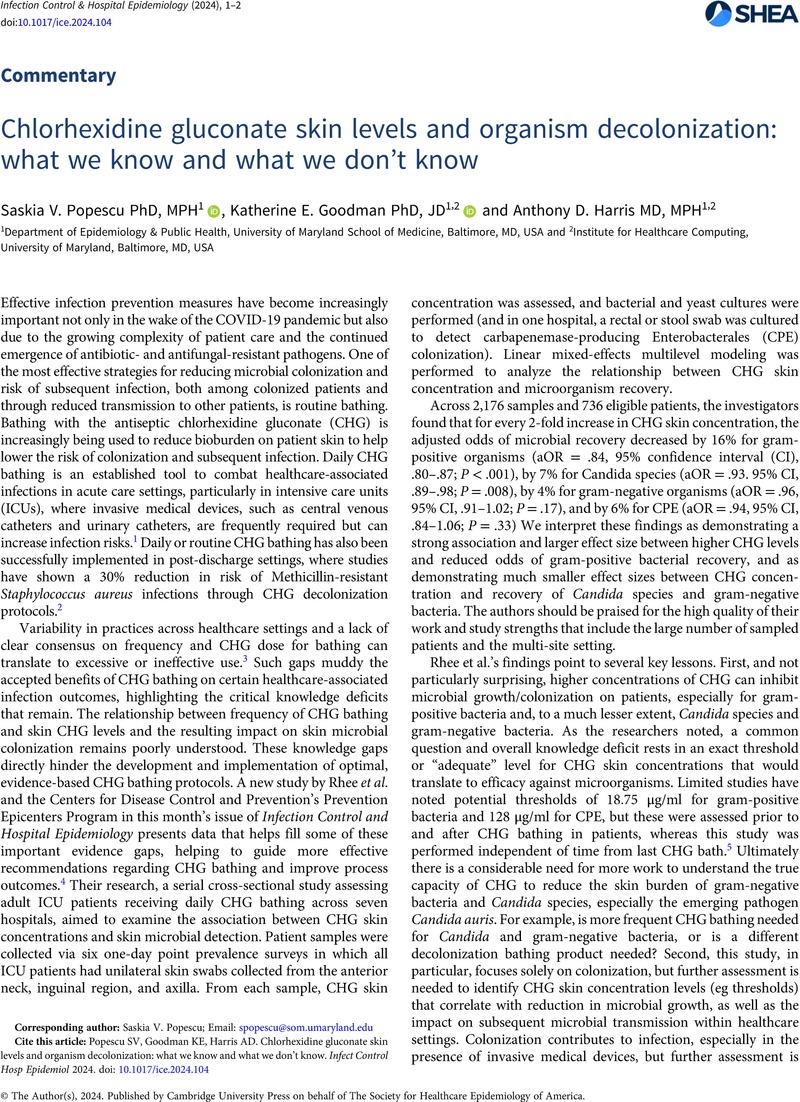No CrossRef data available.
Article contents
Chlorhexidine gluconate skin levels and organism decolonization: what we know and what we don’t know
Published online by Cambridge University Press: 08 August 2024
Abstract
An abstract is not available for this content so a preview has been provided. Please use the Get access link above for information on how to access this content.

Information
- Type
- Commentary
- Information
- Copyright
- © The Author(s), 2024. Published by Cambridge University Press on behalf of The Society for Healthcare Epidemiology of America
References
Johns Hopkins Medicine. CHG Bathing to Prevent Healthcare-Associated Infections. 2024. Accessed from https://www.hopkinsmedicine.org/health/treatment-tests-and-therapies/chg-bathing-to-prevent-healthcareassociated-infections#:~:text=Daily%20CHG%20bathing%20generally%20lowers,resistant%20Staphylococcus%20aureus%20(MRSA).Google Scholar
Huang, SS, Singh, R, McKinnell, JA, et al. Decolonization to reduce postdischarge infection risk among MRSA carriers. N Engl J Med 2019;380:638–650.CrossRefGoogle ScholarPubMed
Patel, A, Parikh, P, Dunn, AN, et al. Effectiveness of daily chlorhexidine bathing for reducing gram-negative infections: a meta-analysis. Infection Control & Hospital Epidemiology 2019;40:392–399.CrossRefGoogle ScholarPubMed
Rhee, Y., Simms, A, et al. Relationship between chlorhexidine gluconate concentration and microbial colonization of patients’ skin. Infect Control Hosp Epidemiol. Published online May 28, 2024. doi: 10.1017/ice.2024.81.CrossRefGoogle ScholarPubMed
Warren, BG, Nelson, A, Warren, DK, et al. Impact of preoperative chlorhexidine gluconate (CHG) application methods on preoperative CHG skin concentration. Infect Control Hosp Epidemiol. 2021;42:464–466.CrossRefGoogle ScholarPubMed
Musuuza, JS, Guru, PK, O’Horo, JC, et al. The impact of chlorhexidine bathing on hospital-acquired bloodstream infections: a systematic review and meta-analysis. BMC Infect Dis. 2019;19(1):416.CrossRefGoogle ScholarPubMed


